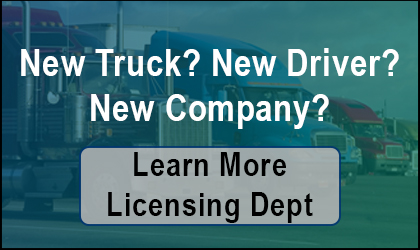
6 ELD Back-Office Tips to Managing Drivers and Trucks Effectively
posted in Alerts by Brian Gray
6 ELD Back-Office Tips to Managing Drivers and Trucks Effectively
A fleet’s back-office to manage electronic logging devices (ELDs) have been given an opportunity to better manage their vehicles and drivers when it comes to audits, violations, maintenance, and more.
However, we have seen many fleets having issues with ELD management basics, not optimizing their ELD data, and not managing their drivers’ logs to make sure the fleet is running efficiently and in compliance.
With fleets often spread out in regional or national operations with many drivers and high rates of turnover, it can be tough to keep drivers up to speed on all ELD logs and data coming in.
Below are six ELD back-office tips that all fleets should be doing to manage their fleets ELDs (and AOBRDs) effectively.
1. Logs must be audited by the Carrier
Drivers will always look for loopholes when it comes to hiding drive time or miles. It is common knowledge about how drivers may try to manipulate their ELD logs, you can read our article here. You will also be constantly training new drivers on ELD devices and mistakes will happen.
The ELD Mandate specifies that the carrier must audit the ELD logs (not the driver) to make sure the driver logs are as accurate as possible. Personal Conveyance must be done correctly, annotations must be properly used, corrective action and driver training is required, yard moves and maintenance must be logged properly, and in the event of team drivers, the ELD must display the data for both co-drivers who are logged into the system.
If a team driver forgets to switch drivers on the ELD, or if a driver forgot to log out of the ELD and now it says he is over hours in the morning, it should be a simple back-office fix to edit that log change with a notation.
The last thing you want is to have FMCSA or a state investigator show up to do a compliance review and nobody knows how to pull driver logs and the various reports that they ask for.
2. Monitor drivers for violations.
Fleet ELD back-office staff need to be vigilant in keeping an eye on HOS violation reports of their drivers.
EROAD recently analyzed millions of aggregated ELD data points from trips taken by US-based vehicles and drivers from January 1, 2018 through July 31, 2018 to identify violations in relation to type, frequency per driver, and time in violation. The analysis found the 30-minute rest break is the most common violation, followed by 14-hour duty limit, 11-hour driving limit, and on-duty limit.
While the number of violations per driver is increasing for the 11-hour driving limit and 14-hour duty limit, the silver lining in the report is that the average time spent in violation is reducing over time. Do you know what is happening in your fleet?
3. Timing for audits is a concern.
An auditor could come in but ask you several days ahead of time to have driver log data available and send it to them prior to the audit.
Back-office staff need to be prepared to review ELD edits and look at how those edits are being done during the audit, and if there are any malfunctioning devices. Realize that If there is an ELD malfunction and it doesn’t recover, there is only eight days to have that unit repaired and back into the truck.
Also, motor carriers need to be be aware that ELDs capture more data than you might realize and these are the things the FMCSA or state investigators are going to ask for.
4. Monitor all unassigned drive time logs.
One of the biggest problems that companies are having is with drivers forgetting to log in or log out of their ELD. This will cause unassigned miles.
The simple thing to do is to make sure you have the back-office staff to manage the unassigned logs as best as possible and don’t let it pile up. We know of many carriers that are letting unassigned drive logs stack up because their drivers never accept the changes or the fleet doesn’t have anyone monitoring the logs in the back office.
This is dangerous because this will be the first report the FMCSA will ask for during an audit. The auditor will ask for the fleet’s unassigned driver report for the month to fish for any red flags. They will look at what truck accumulated that mileage, and try to track down who should have accepted that time because it’s a false log. If that time belongs to a driver and they didn’t accept it, and you didn’t assign it, then whatever driver that belongs to didn’t have the appropriate time logged on to their log. Look at how you may have categorized the unassigned vehicle moves if it wasn’t directly to a driver.
The other thing is to remember that many fleets are still running AOBRDs and are not on ELDs yet. So, if you come into an internal audit, make sure that you understand if you’re in a transition and be able to communicate that because you’re going to have information in two different forms. You will have it under an AOBRD method as well as ELD.
5. Pay attention to odometer skips or jumps.
Every ELD vendor should have the “odometer skip or jump report”. Be sure you are looking over this report on a regular basis. The easiest way for a driver to manipulate an ELD is to unplug it from the truck. When plugged back in 2 hours later the ELD will show the odometer jump. There are so many ways these miles could have accumulated in that odometer jump back-office staff need to track and investigate why it happened. Drivers should also be held accountable for time that they should have been putting on their logs because it is a false log.
6. Establish rules for Personal Conveyance in your fleet policy
Personal Conveyance mileage and time data is being audited! Where we’re seeing a lot of this is with drivers who want to do personal conveyance, and they don’t necessarily want to show the carrier that they’re doing personal conveyance so they’ll unplug the device, drive a personal conveyance, and then plug it back in.
If the carrier does allow personal conveyance, the federal government has no mileage restrictions or specific times of day for what’s allowable. The carrier can set limits and should be clear on their personal conveyance policy.
Other than keeping your drivers up-to-date on what is personal conveyance (and what is not personal conveyance – see our webinar recording on this topic), the FMCSA recommends that carriers have a policy in place on what they do or do not allow regarding personal conveyance, including any limits.
Need back-office ELD management help? Look no further, let the experts at Glostone manage your ELD reports and help keep your drivers in compliance, no matter what ELD you use.






